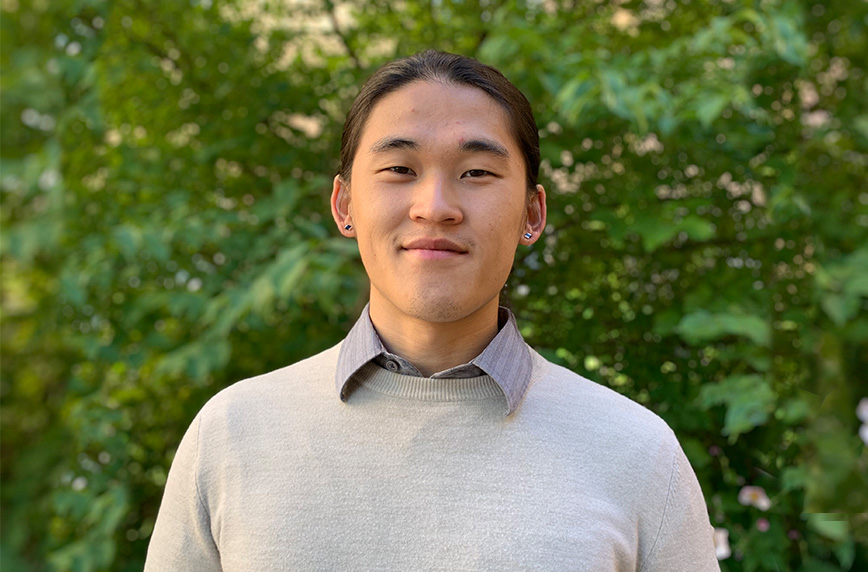Daniel
Daniel is a 23-year-old Chinese American from the United States, where he completed a bachelor's degree at Kalamazoo College (Michigan) with honours in mathematics and physics. He is now in the second year of the mathematics master's programme jointly run by KTH and Stockholm University. His mathematical interests lie in the union of representation theory, invariant theory, algebraic geometry and topology, and combinatorics. Outside the mathematics world, he thoroughly enjoys bouldering/sport climbing (indoors and outdoors) and cooking with friends and family. You will probably find him at Klätterverket Gasverket in the evening after a long day of studying.

Why did you choose this master's programme at KTH?
I chose this master's programme in mathematics because of its reputation in algebraic geometry, topology, and combinatorics. I have certainly not been disappointed by the course and events I participated in at KTH. In June 2022, I attended the Göran Gustafsson conference and symposium organised by KTH's combinatorics group. The keynote lecturer was the amazing June Huh from Princeton University, who resolved Rota's Conjecture. While he was here, he suggested some open problems, one I plan to work on in the autumn!
Another reason for me to choose this programme was because of the university's location, which suits my wants and needs outside of mathematics. Stockholm's architecture seamlessly integrates into its forests and archipelagos: you're never more than a 10-minute walk from a park. There is also a relatively strong climbing community here, both indoors and outdoors. The Klattercentret and Klatterverket gyms are fantastic facilities hosting world-class athletes and competitions such as La Sportiva Legends. There are also a few crags with solid sport climbing and bouldering outdoors, such as Örnberget and Fjärdhundra.
What are the best aspects of your programme?
One of the greatest assets of this master's programme at KTH is that it is a joint programme with Stockholm University, offering a more comprehensive range of studies and collaborations. Students have access to facilities in both institutions, and most classes are split between a professor from each university. KTH researchers also often collaborate with Mittag-Leffler to organise conferences, symposiums, and research workshops in which master's students are encouraged to participate. For these reasons, I think students here have more opportunities to learn from and network with a higher volume of top-level mathematicians.
What are some of your favourite courses so far?
My favourite courses so far have been Polytopes (SF2724), Algebraic Topology (MM8042), and Representation Theory (MM7050). These courses have solidified my interests in algebraically flavoured problems from topology, combinatorics, and algebraic geometry.
What do you want to do after graduating?
After graduating, I plan to pursue a PhD in mathematics. I have been looking at fellowship opportunities and programmes this summer and will apply for more this winter. I plan to apply to PhD positions at KTH, SU, some other universities in Europe, and a handful of places in the States.
What would you like to say to students thinking of choosing KTH for master's studies?
KTH is an exceptional institution with strong research groups in mathematics. There is a lovely city filled with incredible nature to explore! You can expect to be challenged: you will study hard, learn a lot (I mean a lot) of mathematics, and maintain a reasonable work-life balance.
